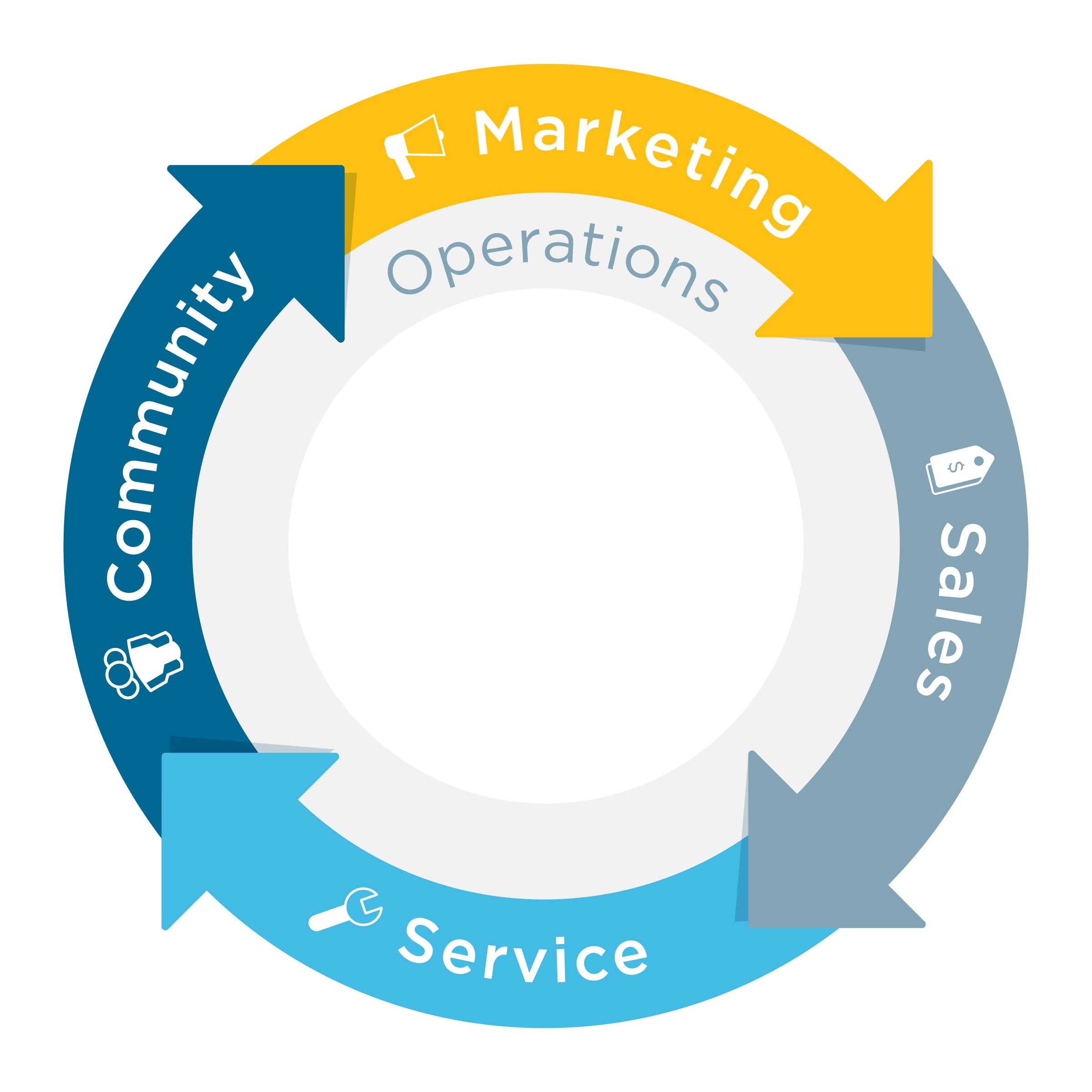In a previous post, we introduced you to the Customer Lifecycle:

The Customer Lifecycle is a blueprint for building a better business — one that succeeds by maintaining a clear and comprehensive grasp on the wants and needs of customers at every stage of the buying cycle. We built our company around the Customer Lifecycle and as consultants, we help others do the same.
Of course, great processes are often powered by great technologies. My goal for this series of posts is to convey at a high level how Salesforce’s core platforms power each stage of the Customer Lifecycle. We’ve already covered marketing, so let’s move on to sales.
Sales Cloud 101
Given that Salesforce’s three main platforms — Marketing Cloud, Sales Cloud and Service Cloud — are designed to work together seamlessly, it can be hard to comprehend where one stops and the next one begins. I definitely struggled with this early on. For me, though, the “aha” moment came when I started paying more attention to the standard objects associated with each.
In Salesforce, an object is like a table in a spreadsheet — a collection of records that all represent the same type of thing. Objects can be built or customized, but a standard object is one that exists out of the box and comes ready with pre-existing fields that align with common use cases for a particular type of record.
In my previous post, I discussed campaigns and leads. Both of those are standard objects associated with Marketing Cloud, the latter overlapping with Sales Cloud. Once marketing has gathered and qualified a lead, its sales’ job to further vet it. Would this person be a good fit as a customer? Do they seem like they might be ready to buy? If the answer to either of these questions is no, sales could mark the lead as “not qualified.”
If your sales team decides to pursue the lead further, however, then they might convert it into a contact. In this case, a contact is somebody who shows true potential as a customer, even if an actual sale seems a long way off (though it’s worth noting that you can create contacts for anybody you want to track, including competitors, partners and even your own employees). When you convert a lead into a contact, Sales Cloud will also generate an account. An account simply represents the company that your contact works for. Further into the sales process, you may acquire more contacts associated with that one account. Both contacts and accounts are standard objects that span the entirety of Salesforce’s product suite.
At the conversion stage, a salesperson also has the option to create an opportunity (a standard object specific to Sales Cloud). An opportunity is neither a person nor a company, but the specific potential for a deal. Every business will need to define for themselves what constitutes an opportunity, but typical criteria include basic scope as well as revenue and timeline projections.
After a sale is won or lost, a salesperson can close the opportunity, and contacts and accounts will remain in the database.
Using Sales Cloud to Power the Customer Lifecycle
As is the case with many web-based technologies, standard objects are essentially digital metaphors for things that exist in the “real” world — in this case, spreadsheets. However, spreadsheets are static, siloed and do nothing to better serve customers.
Sales Cloud gives salespeople an easy way to view every interaction with a given lead or contact, including those that involved the marketing team or another salesperson. Industry, company size, business problem, questions, concerns and sticking points — it’s all right there, a full picture of a real person.
Instead of a standard sales pitch, your sales team will able to address the specific wants and needs of potential customers who would truly stand to benefit from the products or services that you sell. In turn, this will lead to much happier customers during the “service” stage (more on that in my next post).
A customer-centric approach to marketing leads to a customer-centric approach to sales leads to a … see where we’re going with this? It really is a life cycle — and Salesforce makes it possible.



